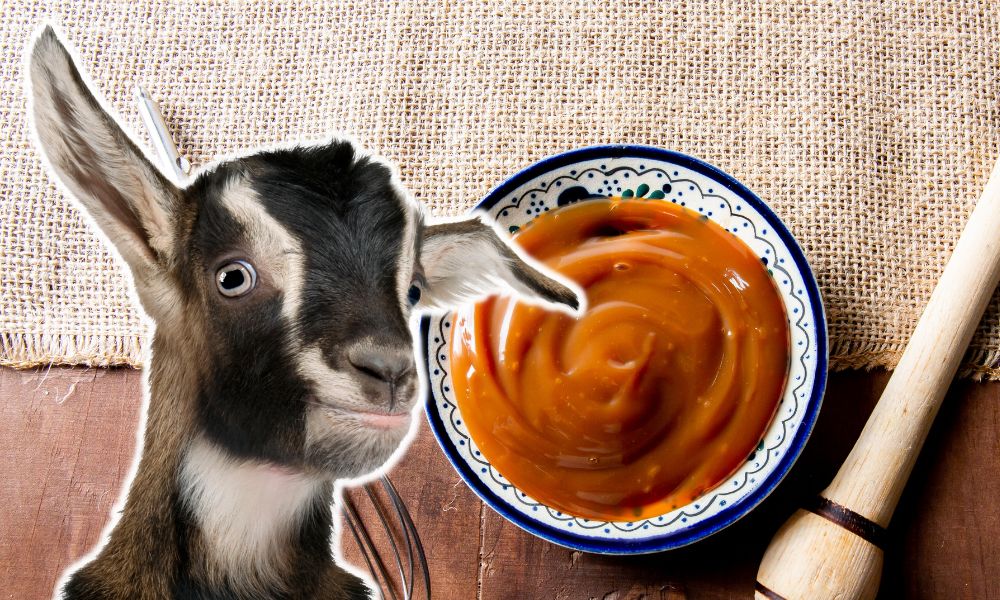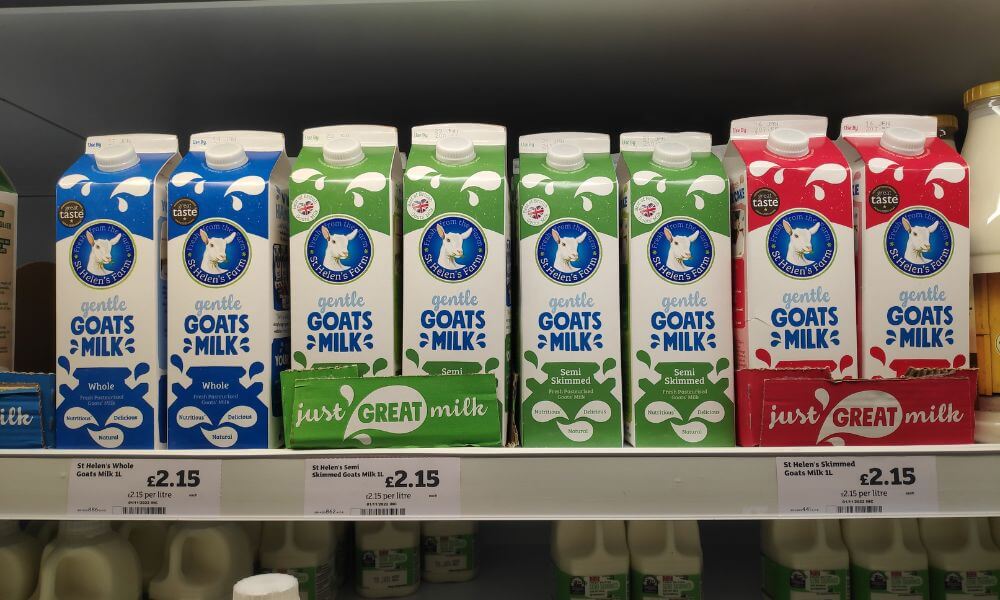If you see cajeta called for in a recipe, then you can know what it is.
Whether you can get hold of any in your region is another question—I had to make my own!
It’s really delicious, though, and certainly worth trying if you can get your hands on some.
Let’s look further into this.

Is cajeta the same as caramel?
It is not exactly the same thing.
Making caramel is really a much simpler process.
Caramel is made using only sugar and salt.
It’s a heating process which breaks down granulated sugar molecules, creating a deep, brown, rich color and flavor.
It turns into a paste in the same way sauces are reduced.
Cajeta is made in a different way, with more ingredients, although it produces a similar result.
You’ll need mostly goat milk, and you can also use a mixture of goat and cow’s milk if you want to do it the traditional way.

You will still also need sugar, salt, and things like vanilla extract and cinnamon for flavor.
Baking soda will produce the best results, too.
So, there’s a lot more ingredients in cajeta.
Often, it’s made simply by boiling condensed milk in water to increase its thickness, and then mixing the rest of our ingredients.
Goat milk is the main ingredient that distinguishes cajeta from caramel, though—so how does this affect the flavor?
What does cajeta taste like?
The best point of comparison for cajeta is actually not caramel, but dulce de leche.
If you have ever tried dulce de leche, then you know the flavor profile of a similar thing made with cow’s milk.
The goat’s milk produces a very different taste.
It is much tangier than both regular caramel and dulce de leche. It’s also richer than dulce de leche, although typically not as rich as ordinary caramel.
It’s still an extremely sweet sauce that has a wide variety of uses.
Think of it much like honey or syrup.
The reduced richness means that is more palatable to more people in a wider variety of ways.
Let’s look into how.
What do you use cajeta for?
The great thing about cajeta is that there are countless ways you can use it. caramel is often thought of as an ingredient that you would put in other foods, such as inside cakes and other baked goods.
This is also true of cajeta, but for those of us with less of a sweet tooth, it’s more widely used in different things.
For one thing, many like to just spread it on their morning toast.
The effect is quite like French toast, and it’s really delicious this way.
You can, naturally, also spread it on other breakfast foods like pancakes, waffles and crepes.
It’s rich and sweet on these foods.
If you like to sweeten up your coffee or tea, then a drizzle in the cup is a really great way to do this.
You can also dip fresh fruit into it, you can stir it into oatmeal—really, anything you can imagine!
Cajeta is nothing if not incredibly versatile, so you’re bound to find something you’ll love with it.
How to store it, then?
Do you refrigerate cajeta?
Yes, generally it’s best to refrigerate your cajeta.
It will go a lot longer this way, and will last for up to a month in the fridge.
If you leave it out, you should use it as quickly as you can or store it in a cool, dry place until it starts to crystallize.
It can also be frozen for up to a year, if you ensure the surface of the container is covered with plastic wrap and made airtight.
Leave some space at the top, though, for it to expand, otherwise it will break the seal when it expands.
Does cajeta go bad?
Yes, it certainly does.
If left out, it will start to crystallize quite quickly and become inedible.
Keeping it cool in the fridge will delay this process, but it will eventually happen one way or another.
Cajeta definitely goes bad, so be sure to have a plan for it.
So, what cajeta is tends to be a pretty straightforward question.
It’s a special, regional kind of caramel more popular in Mexico than anywhere else in the world, but it is still very similar to caramel.
It’s a really delicious ingredient, though, with a huge variety of uses.
It’s good to be baked into cakes and treats, it’s good spread on toast, or if you’re feeling really indulgent, just eat a spoonful!
But don’t go crazy—think of your teeth.
